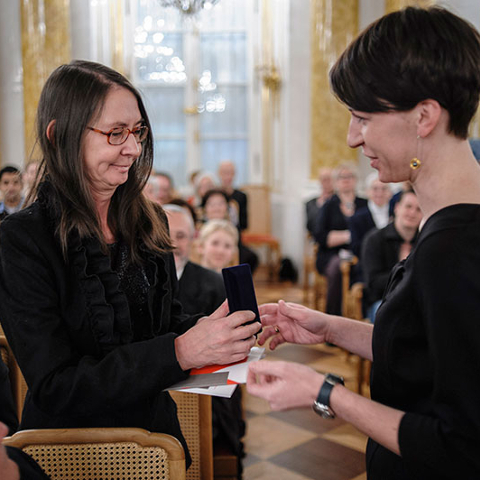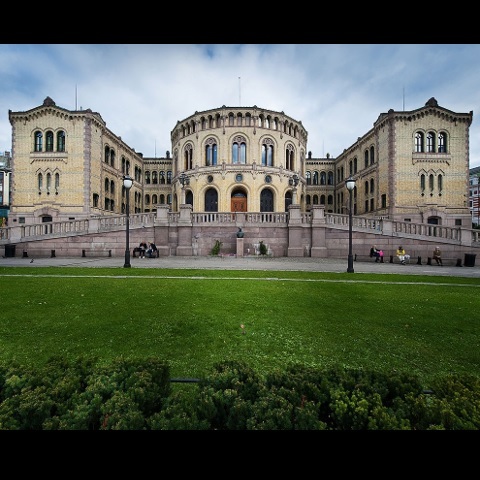Composers / Witold Lutosławski / Persons catalog
Marcin Bogusławski
Marcin Bogusławski (b. 1937) — son of Danuta Lutosławska from her first marriage (with the architect Jan Bogusławski), Witold Lutosławski’s son-in-law. Following his architectural studies in Warsaw, he settled in Oslo. He designed a number of Norway’s representative buildings, such as the churches in Drammen and Larvik, and worked in teams which created the design for the olympic stadium in Lillehamer and that of the Statoil headquarters.
Witold Lutosławski said of him to Irina Nikolska: “Marcin was seven years old when he appeared in our home as my stepson, and I was the one who raised him with Danusia (dim. of Danuta — trans. note). After her, Marcin is my closest one — the closest family. Since he has lived in Oslo for the past 20 years, we also decided to organize ourselves a sort of existence in Oslo. In effect we sojourn there, even up to several months at a time. Marcin also persuaded me to buy this tiny house close to Oslo. It used to be a tiny house owned by a farmer, beautifully situated by some water and a forest, it is a rocky and very beautiful country. We send a month or two there, mostly in the spring. (...) Marcin has three daughters. The middle one is my goddaughter. Her name is Agatka (dim. of Agata - trans. note), and I find her endearing, because in her character she reminds me of Danusia. They really do understand each other wonderfully. And I can truly say that she is very dear to me”.
Marcin Bogusławski remembers his stepfather: “He was a man of homogeneity, unbelievably consistent, simultaneously a great Polish patriot, a very rare example when it comes to his stance in life as a family man and citizen”. He admires him for many things, also for his exceptional relation to work: “Witek (dim. of Witold — trans. note) had a certain trait, of which really everyone should be envious: his working method. I am talking about his method in compositional, as well as that of any other work which he did. He was so precise and systematized that alongside his immense life energy and love for work in everything that he did, he achieved results that were overpowering. He was not a man who acted hastily. He approached all matters scrupulously and did not repeat a thing. When he finished, he knew, what he had completed, and used it as a sort of trampoline to ‘jump’ even higher.”
Despite this characteristic, which in time gave birth to a type of pedantry, Lutosławski also knew how to surprise people. Marcin Bogusławski reminisces: “I remember, when he completely shocked and very much impressed me. He had just completed writing his latest symphony. So he called me and said: ‘You know what? I finished. Come and we’ll go out for dinner.’ I came with my wife, daughters, and we were getting ready to go to the restaurant for dinner, when Witek, while stepping outside, said: ‘You know, Marcin, in the last moment I changed the whole finale of this symphony’. One would expect that with all this systematic behaviour one would at a certain moment begin to fall into a routine, but he, while working, was able to preserve a fresh glance till the final moment.”
On January 24, 2013, at anniversary celebrations at the Royal Castle in Warsaw, Marcin Bogusławski and Gabriela Bogusławska were hounoured with the Lutosławski Centennial Medal. (kt / trans. mk)

